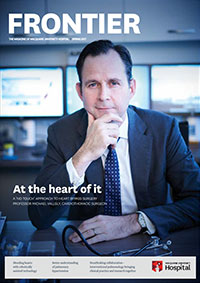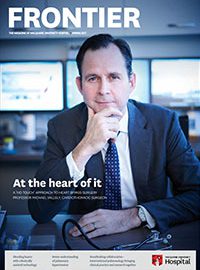Harris RS, Yan TD, Black D, Bannon PG, Bayfield MS, Hendel PN, Wilson MK, Vallely MP
Heart Lung Circ 2013 Aug;22(8):618-26
PMID: 23422500
Abstract
BACKGROUND: In the era of TAVI, there has been renewed interest in the outcomes of conventional AVR for high-risk patients. This study evaluates the short- and long-term outcomes of AVR in octogenarians.
METHODS: A retrospective review was performed of all 117 patients aged ≥ 80 years who underwent AVR, (isolated AVR (n = 60) or AVR+CABG (n = 57),) from August 2005 to February 2011 at Royal Prince Alfred Hospital and Strathfield Hospital. Univariate analysis was used to compare pre- and post-operative variables between younger and older subgroups (age 80-84, n = 82; age 85-89, n = 35 respectively). Long-term survival data was obtained from the National Death Index at the Australian Institute of Health and Welfare and survival curves were constructed using the Kaplan-Meier method.
RESULTS: The median age was 83 years (interquartile range, 81-85 years), 46.2% were females, the median EuroSCORE was 10.89% (interquartile range, 8.20-16.45%) and 16.2% of patients had a EuroSCORE ≥ 20%. The difference between subgroups for history of stroke was significant (p = .042). Post-operative complications included pleural effusion (12.8%), new renal failure (4.3%) and respiratory failure (4.3%). The rate of major adverse events was extremely low, with no cases of stroke. The 30-day mortality rate was 3.4%. There was a significant difference between subgroups for 30-day mortality (p = .007). 38.9% of patients were discharged home, 11.5% were transferred to another hospital and 38.9% spent a period of time in a rehabilitation institution post discharge. In terms of long-term survival, the six-month, one-year and three-year survival was 95.6%, 87.6% and 58.4% respectively.
CONCLUSIONS: Surgical AVR yields excellent short- and long-term outcomes for potentially high-risk, elderly patients.
 Macquarie University Hospital surgeon Professor Michael Vallely and his team have completed a network meta-analysis of the latest evidence for off-pump heart surgery across the world. The research shows that a ‘no touch’ or ‘anaortic’ approach has a significant impact on reducing stroke. Download the Spring 2017 Frontier Magazine
Macquarie University Hospital surgeon Professor Michael Vallely and his team have completed a network meta-analysis of the latest evidence for off-pump heart surgery across the world. The research shows that a ‘no touch’ or ‘anaortic’ approach has a significant impact on reducing stroke. Download the Spring 2017 Frontier Magazine

